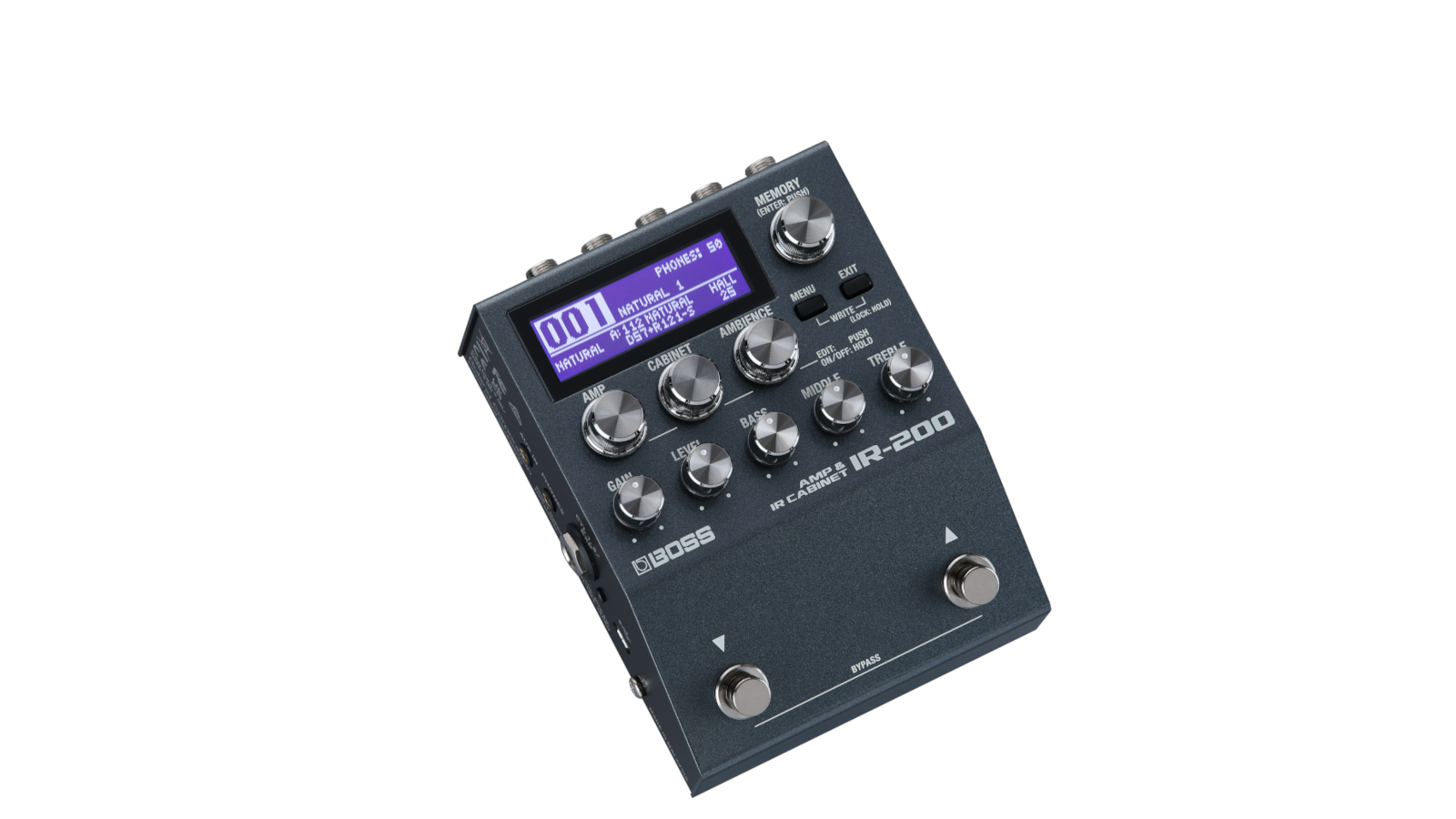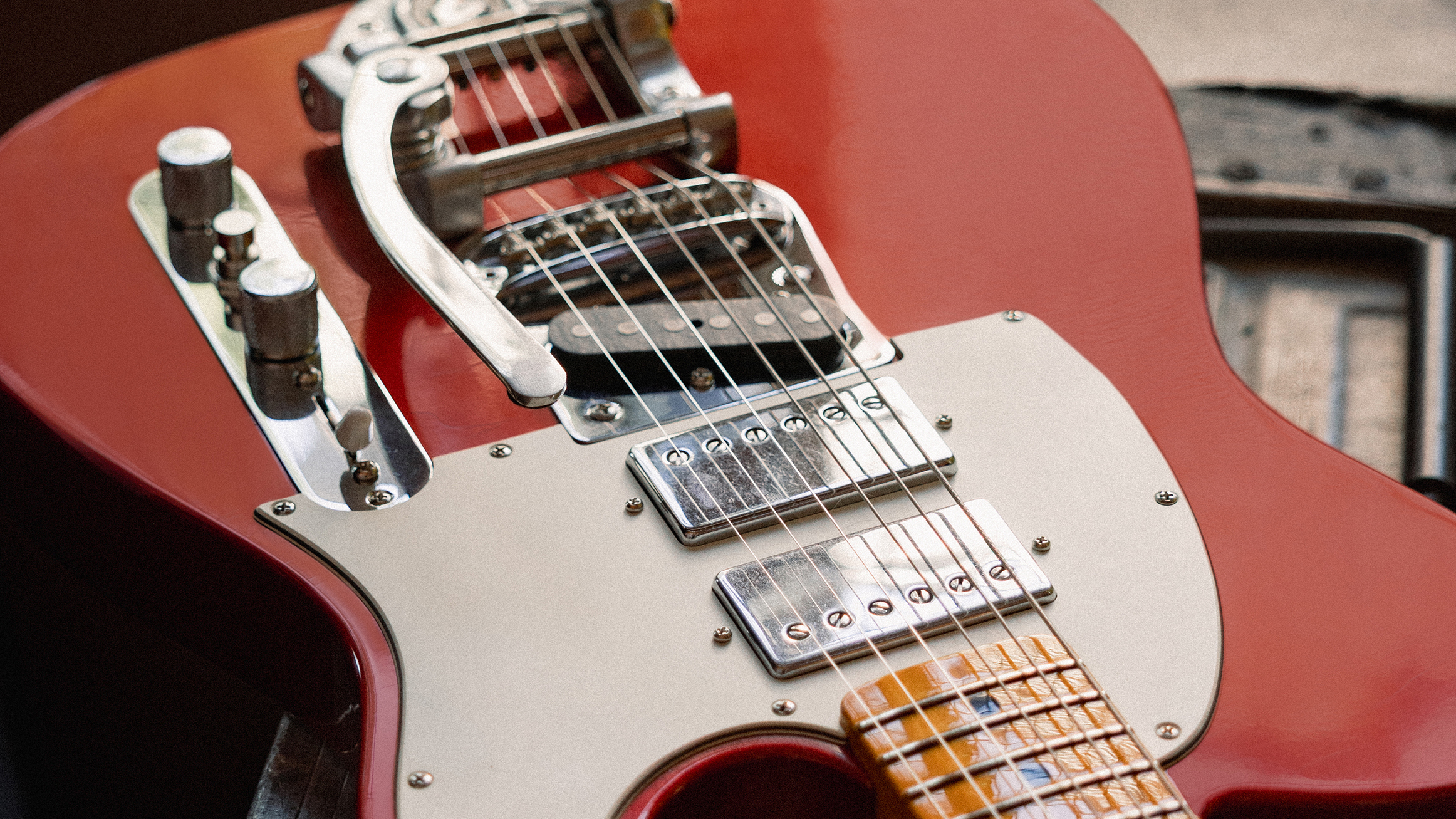GuitarPlayer Verdict
A fun and powerful pedal that is likely to be extremely popular.
Pros
- +
An impressive selection of amp models and IR cabs
- +
Compact size
- +
Great price
- +
Versatile interface and routing options
Cons
- -
Clean amp models might sound a little sterile
You can trust Guitar Player.
Amp modeling isn’t new territory for Boss. The company has plied those waters for many years and to popular effect with latter-day products like the GT-1000 floor controller and Katana amp series. But this compact and truly stompbox-sized offering somehow feels like a step in a new and entirely natural direction.
The IR-200 Amp & IR Cabinet presents an impressive features-to-size ratio and might be one of the boldest efforts yet to squeeze an entire rig into the smallest space possible, while still offering a comprehensive menu of amp types, cab sims, room reverbs and bountiful user-programmable preset slots.
In naming the IR-200 Amp & IR Cabinet, Boss has overtly recognized the explosion in credence given to an impulse response (IR) technology and its ability to accurately replicate the sounds of speaker cabinets in the digital realm, while potentially confusing the issue a little. The feature is just a small fraction of what this little box can do. It also packs eight guitar amps (the usual classics from clean, to jangle, to crunch, to singing lead), three bass amps, dual IR slots for genuine stereo processing (with 154 IRs from Boss and Celestion and 128 user-loadable slots), and EQ and spatial processing. All this, plus a full and intuitive amp-like interface, bountiful connectivity, and easy access and edit functions.
So, deep breath… let’s dive in.
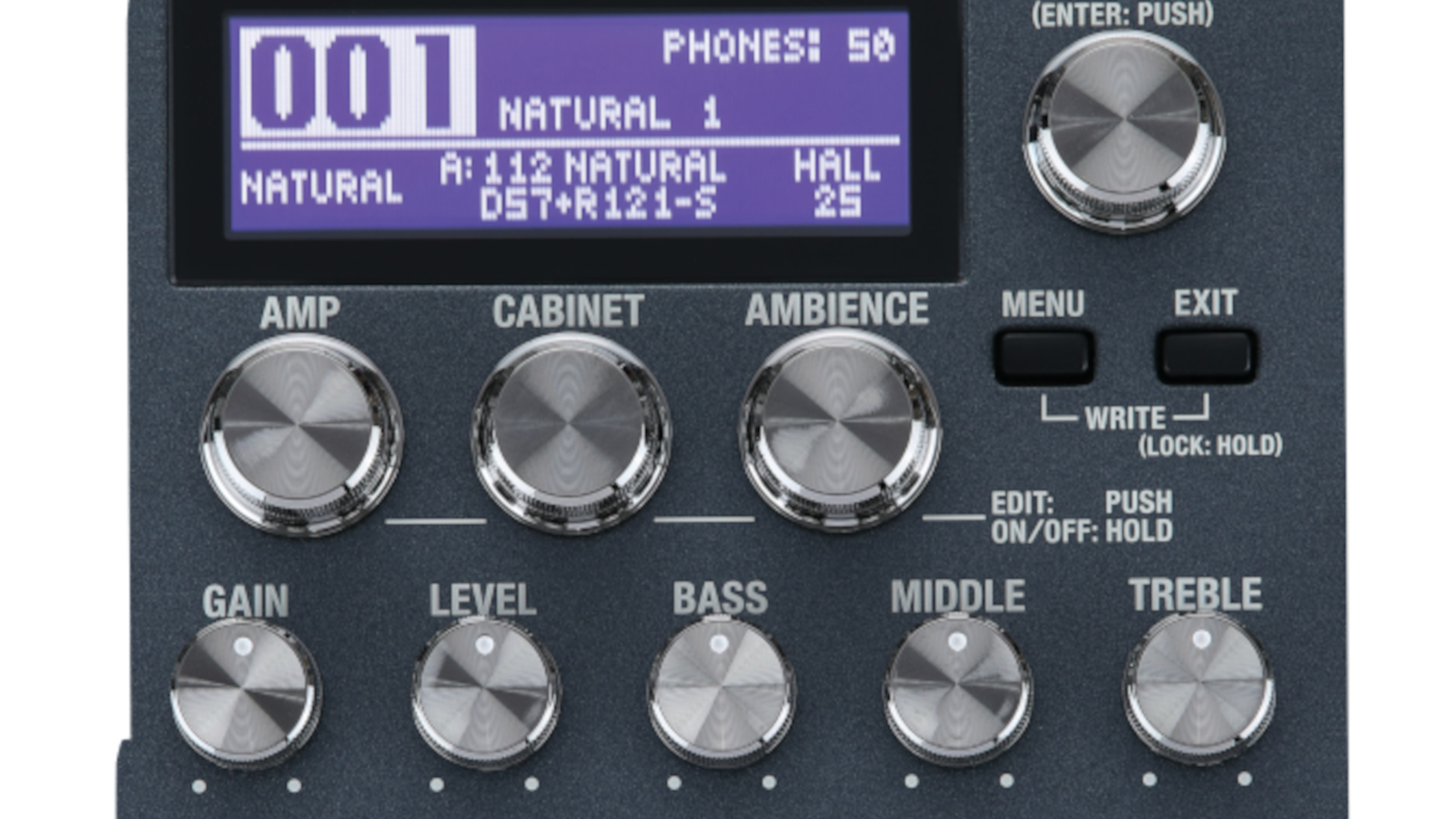
Controls in the amp section include the self-explanatory gain, level, bass, middle and treble knobs. Call up a preset using the memory rotary selector in the top-right of the unit (which doubles as headphone volume when pushed) or the up/down foot switches and these parameters will all be fixed per preset. But turn the gain control, for example, and the display shows the change in setting, along with the current preset settings of the other knobs. The amp and cabinet controls dial alternatives for each of those within any selected preset (push either one to enter and tweak their parameters), and the ambience knob determines the reverb depth while it accesses the three main types: Hall, Room and Studio.
All changes can be saved as new presets in any of 128 user memory slots.
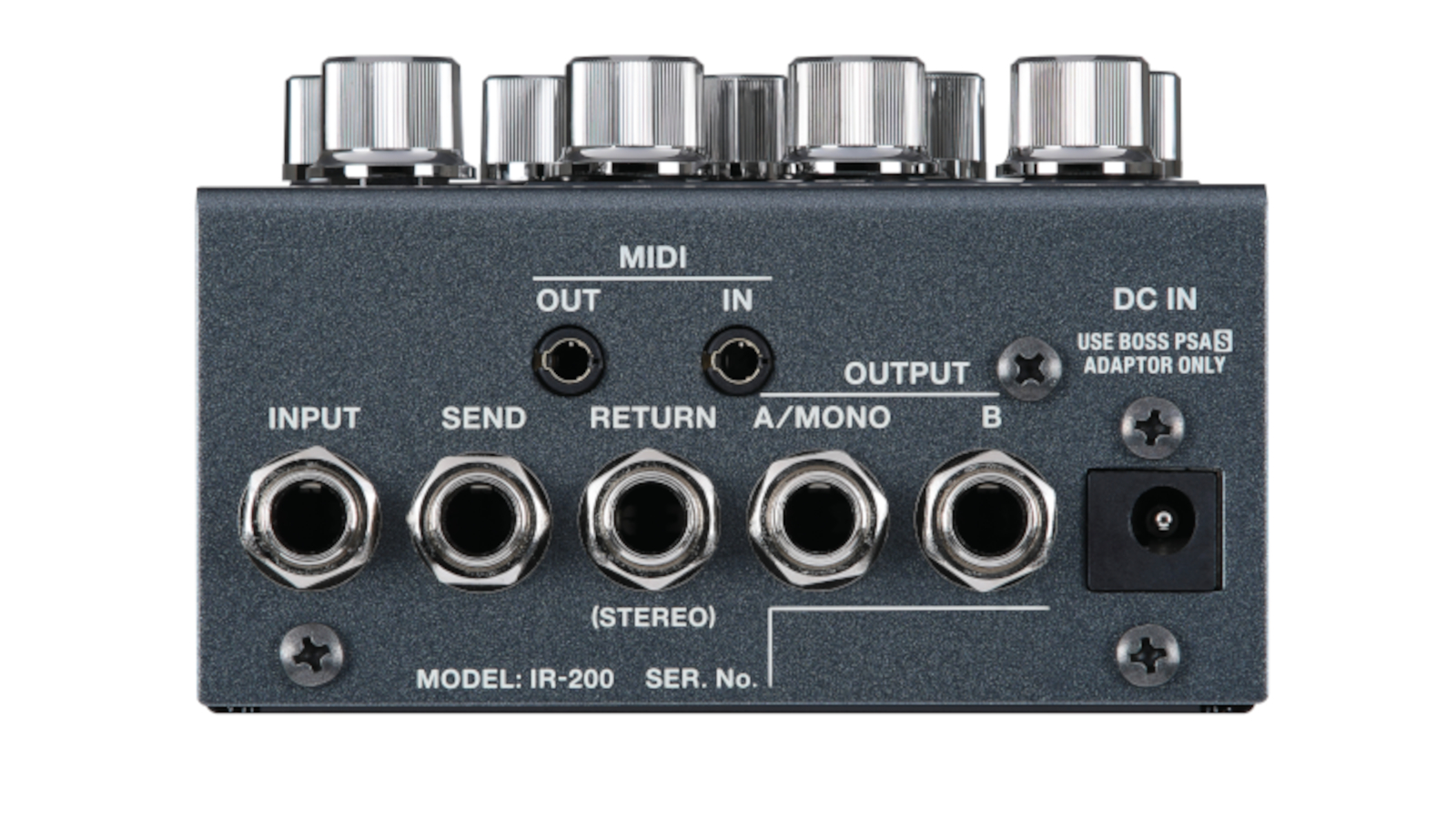
Connectivity is impressive for a box this size. There’s a single input, FX loop send with stereo return, stereo outputs, MIDI in and out on mini jacks, aux in, stereo headphone out, connection for control or expression pedals, and a USB port that lets you use the pedal as an interface for recording on Mac, Windows, and iOS devices. Some naysayers will point out the lack of XLR outputs, but those would be a tough fit on this 5 by 4 by 1.75-inch box. The available stereo ¼-inch outs should adapt to any conceivable requirement – although they’re unbalanced TS, and balanced TRS would have been a nice touch.
Tech-wise, it’s all backed up by 32-bit AD/DA conversion using Roland/Boss’s Adaptive Focus method, at a sampling frequency of 96 kHz, with 32-bit floating-point processing. If you’re noting a lack of pedal-style effects, that’s what the loop is for. Rare in a unit this size, the mono send and stereo return are intended for full integration with your pedalboard, which is where Boss sees this box putting down roots. Drive pedals in front, delay and modulation in the loop, and Bob’s your uncle.
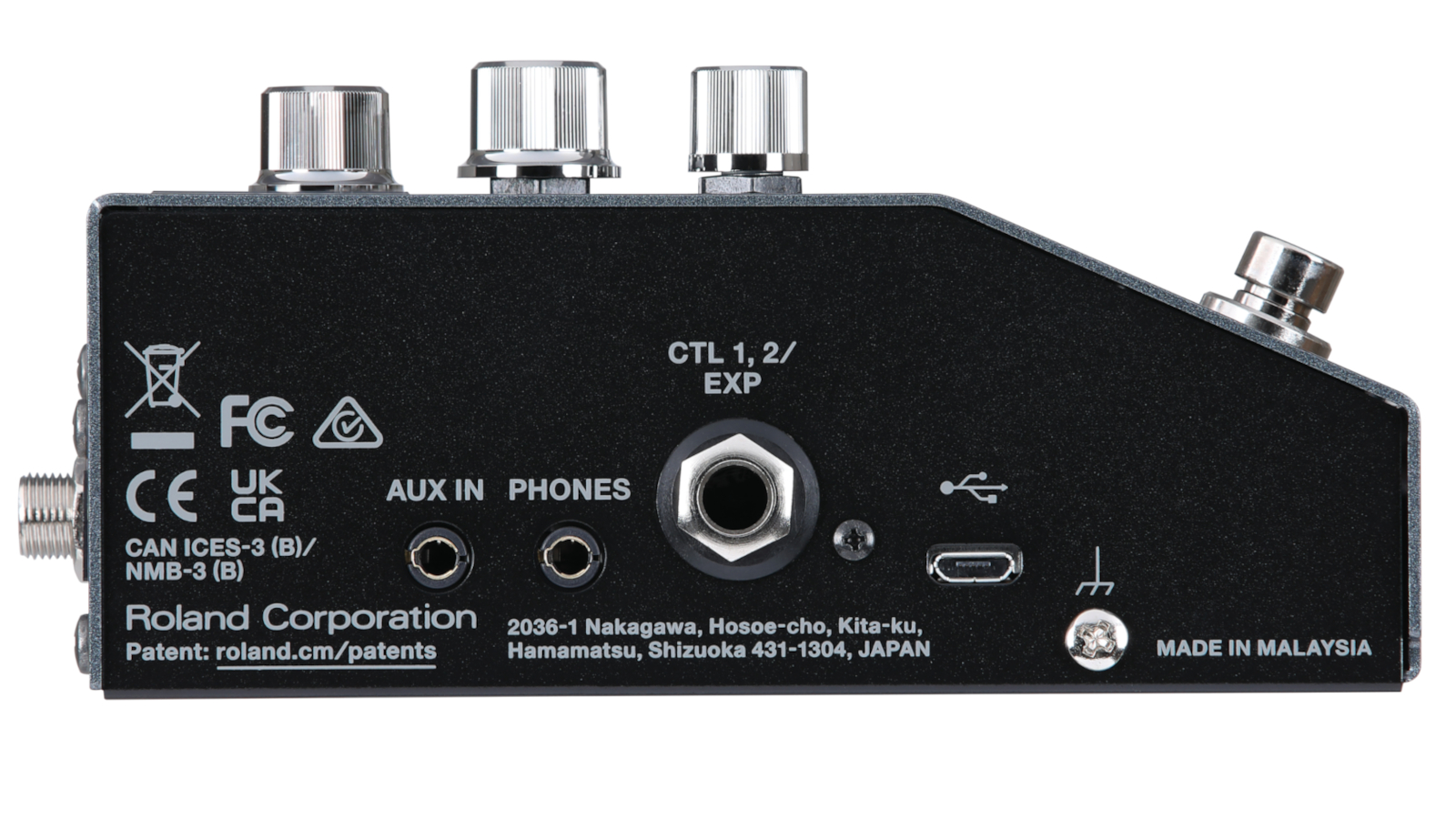
We tested the IR-200 in stereo with studio monitors and headphones, and in mono with a Tech 21 Power Engine Deuce Deluxe, using a Les Paul and a Stratocaster, and found it both easy to come to grips with and a lot of fun. Although the guitar amp models seem a bit generic – a clean original Boss platform, a JC-120, a Twin Reverb, an AC30, a tweed Bassman, a Boss X-Hi Gain, a Marshall Super Lead and a Bogner Uberschall – they’re each well-judged renditions of the archetype and won’t likely befuddle the average user. Each is broadly tweakable with respect to speaker cabinet, miking and room ambience options, as well as the usual gain and EQ parameters, and it’s easy to find usable, enjoyable and fully personalizable sounds.
If anything, the cleaner options are a little sterile, without the tubey edge-of-breakup tone some would like to attain when dialing in the real thing at the sweet spot. But as part of a floor-based fly rig with a selection of pedals for dirt, they proved entirely adequate and played nicely with a TS9 Tube Screamer, an Angry Charlie and a Wampler Tumnus Deluxe, for starters. Crank up the crunch and high-gain-intended models, though, dial them in to taste, and it’s difficult not to find yourself smiling, especially with a little volume going in the room to aid touch sensitivity and sustain, or a nice ambient stereo mix in the cans.
The IR-200 will find some natural rivals in the Strymon Iridium and Atomic Ampli FireBox, both of which are in a similar price range and excel at their basic amp sounds, if falling a little short on presets, deep-dive programmability and LCD displays. (Though the IR-200’s screen may look outdated, it’s very readable in most lights.)
All in all, this is a fun and powerful pedal that is likely to be extremely popular.
Specifications:
- CONTROLS Memory knob, menu and exit buttons; amp, cab and ambience knobs; gain, level, bass, middle, treble knobs; up and down footswitches
- DSP 32-bit, 96 kHz
- CONNECTIVITY Input, FX loop send/return, mono/stereo outputs, MIDI in/out, Aux in, headphone out, USB Micro-B port, Ctl 1, 2/ Exp. Out, DC in
- WEIGHT 1.5 lbs
- BUILT Malaysia
Dave Hunter is a writer and consulting editor for Guitar Player magazine. His prolific output as author includes Fender 75 Years, The Guitar Amp Handbook, The British Amp Invasion, Ultimate Star Guitars, Guitar Effects Pedals, The Guitar Pickup Handbook, The Fender Telecaster and several other titles. Hunter is a former editor of The Guitar Magazine (UK), and a contributor to Vintage Guitar, Premier Guitar, The Connoisseur and other publications. A contributing essayist to the United States Library of Congress National Recording Preservation Board’s Permanent Archive, he lives in Kittery, ME, with his wife and their two children and fronts the bands A Different Engine and The Stereo Field.
A gigantic $360 off Positive Grid's celebrated BIAS amp sim software may have just put the nail in the coffin of my beloved valve combo
"Let’s take acoustic-electric amplification to its ultimate realization." How to make an acoustic amp shimmer like a vintage Fender, smolder like a Dumble or scream like a Marshall
